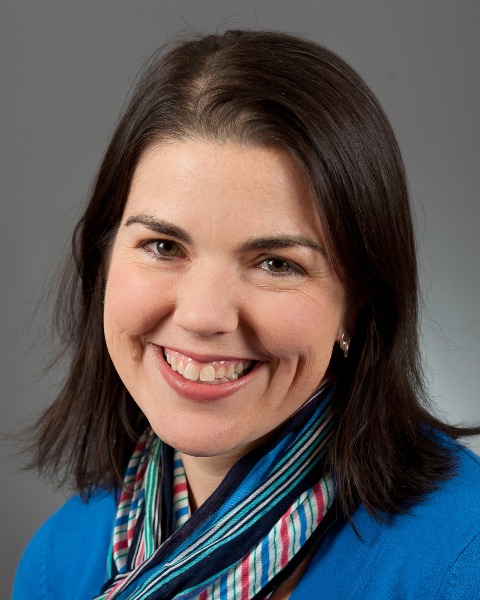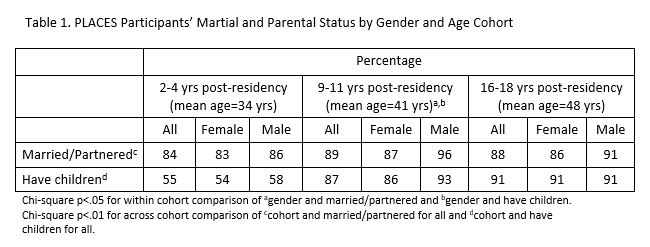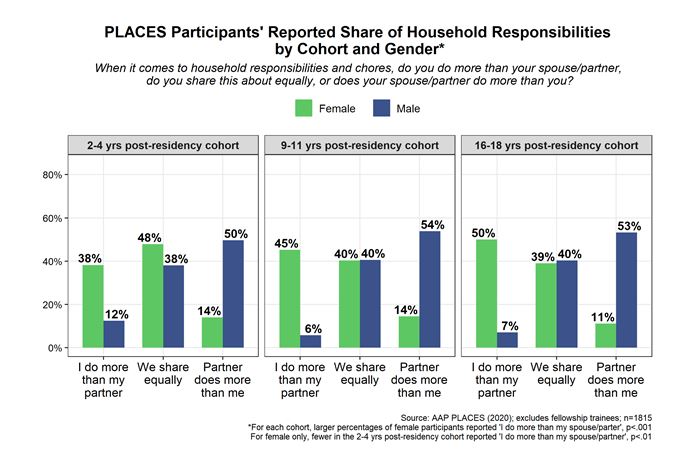Back
Health Services Research
Category: Abstract Submission
Health Services Research III
6 - Early Versus Mid-Career Pediatricians’ Share of Household Responsibilities by Gender
Monday, April 25, 2022
3:30 PM – 6:00 PM US MT
Poster Number: 6
Publication Number: 6.414
Publication Number: 6.414
Amy J. Starmer, Boston Children's Hospital, Boston, MA, United States; Mary Pat Frintner, American Academy of Pediatrics, Itasca, IL, United States; Bobbi Byrne, Indiana University School of Medicine, Indianapolis, IN, United States; Elizabeth A. Gottschlich, American Academy of Pediatrics, Itasca, IL, United States; Gary Freed, University of Michigan Medical School, Ann Arbor, MI, United States

Amy J. Starmer, MD, MPH (she/her/hers)
Associate Medical Director of Quality
Boston Children's Hospital
Boston, Massachusetts, United States
Presenting Author(s)
Background: Physician careers involve multiple commitments that must also be balanced with responsibilities at home. Prior work showed that mid-career female pediatricians had a larger share of household responsibilities than male pediatricians. Less clear is how responsibilities are shared among more recent residency graduates.
Objective: To examine pediatricians’ reported share of household responsibilities by gender among 3 different career stage cohorts.
Design/Methods: National data collected in September-December of 2020 from the AAP Pediatrician Life and Career Experience Study (PLACES), a cohort study of US pediatricians. Participants were recruited into 1 of 3 cohorts based on residency graduation and in 2020 were: 1) 2-4 yrs, 2) 9-11 yrs and 3) 16-18 yrs post-residency. 84% of PLACES participants responded to the 2020 survey. Participants in fellowship training (n=167) were removed from analysis. Chi-square compared a) married/partnered, b) have children, and c) share of household responsibilities and chores (I do more, we share equally, partner does more) by gender and cohort. Multivariable logistic regression examined independent effects of gender and cohort on share of household responsibilities, controlling for participant and partner part vs full time work status and have children.
Results: 74% self-identified as female, 87% are partnered, and 78% have children. Fewer participants in the 2-4 years post residency cohort (55%) than the other cohorts (87% and 91%) have children [Table 1]. Female participants in the 9-11 years post-residency cohort were less likely than male participants to be partnered and have children. Among participants who are partnered, in each cohort female participants were more likely to report they do more of the household responsibilities than their partner [Figure]. Among females, those 2-4 years post-residency were less likely than those 16-18 years post-residency to report they do more than their partner (38% vs 50%, p< .01). Controlling for part vs full time work status and have children, female participants were more likely and those only 2-4 yrs post-residency were less likely to report doing more than their partner (aOR=5.78, 95% CI=3.85-8.69 and 0.71, 0.51-0.99, respectively) [Table 2].Conclusion(s): Among PLACES participants, female pediatricians report more household responsibilities than their partner. While smaller for those most recently graduated from residency, there was a gender gap in all 3 cohorts.
Table 1. PLACES Participants’ Martial and Parental Status by Gender and Age Cohort
Figure. PLACES Participants' Reported Share of Household Responsibilities by Cohort and Gender
Objective: To examine pediatricians’ reported share of household responsibilities by gender among 3 different career stage cohorts.
Design/Methods: National data collected in September-December of 2020 from the AAP Pediatrician Life and Career Experience Study (PLACES), a cohort study of US pediatricians. Participants were recruited into 1 of 3 cohorts based on residency graduation and in 2020 were: 1) 2-4 yrs, 2) 9-11 yrs and 3) 16-18 yrs post-residency. 84% of PLACES participants responded to the 2020 survey. Participants in fellowship training (n=167) were removed from analysis. Chi-square compared a) married/partnered, b) have children, and c) share of household responsibilities and chores (I do more, we share equally, partner does more) by gender and cohort. Multivariable logistic regression examined independent effects of gender and cohort on share of household responsibilities, controlling for participant and partner part vs full time work status and have children.
Results: 74% self-identified as female, 87% are partnered, and 78% have children. Fewer participants in the 2-4 years post residency cohort (55%) than the other cohorts (87% and 91%) have children [Table 1]. Female participants in the 9-11 years post-residency cohort were less likely than male participants to be partnered and have children. Among participants who are partnered, in each cohort female participants were more likely to report they do more of the household responsibilities than their partner [Figure]. Among females, those 2-4 years post-residency were less likely than those 16-18 years post-residency to report they do more than their partner (38% vs 50%, p< .01). Controlling for part vs full time work status and have children, female participants were more likely and those only 2-4 yrs post-residency were less likely to report doing more than their partner (aOR=5.78, 95% CI=3.85-8.69 and 0.71, 0.51-0.99, respectively) [Table 2].Conclusion(s): Among PLACES participants, female pediatricians report more household responsibilities than their partner. While smaller for those most recently graduated from residency, there was a gender gap in all 3 cohorts.
Table 1. PLACES Participants’ Martial and Parental Status by Gender and Age Cohort

Figure. PLACES Participants' Reported Share of Household Responsibilities by Cohort and Gender

